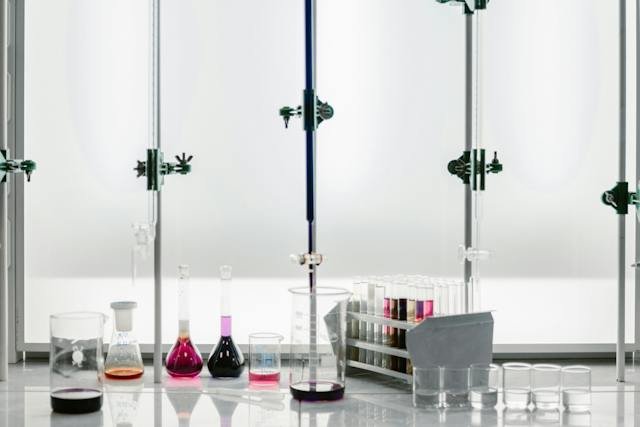
Befor e receiving regulatory approval for BA/BE Studies, the FDA requires generic drugs to be therapeutically equivalent to either their innovator product or reference listed drug. In order to establish this equivalence, BE studies measure and compare formulation performance so as to establish therapeutic equivalence.
BA BE studies are mandated for all new drugs and many generic ones. Thankfully, regulatory authorities, pharmaceutical manufacturers, and basic scientists continue their efforts to understand and develop more efficient yet scientifically sound approaches to assess BE of various dosage forms, particularly complex special dosage forms.
Cost-Effectiveness
BA/BE studies are essential in pharmaceutical research as they establish the rate and extent of drug absorption within the body, helping researchers pinpoint any issues with formulation such as its safety or efficacy. These studies typically involve giving medications to healthy volunteers or patients under fasting conditions and monitoring concentrations over time; the form may include tablets, solutions or injections – with results providing insight into its safety/effectiveness across different patient populations.
Cost-effectiveness in BA/BE studies relies heavily on the quality and methods used for collecting samples and conducting analyses. Poorly collected, processed, or stored biological fluids could render results meaningless; so selecting an efficient sample collection method, storage solution and sampling technique are crucial elements to consider in designing any research study. Furthermore, the design must consider any biases which could skew results adversely.
Integral part
Bioequivalence (BE) studies are an integral part of drug development for generic medications, helping accelerate approval processes and decrease costs while assuring that new drugs match brand name counterparts – an invaluable benefit for both consumers and the drug industry as it allows generics to compete more successfully against brand-name options while simultaneously increasing consumer demand.
In the United States, FDA has made numerous attempts at developing more efficient and scientifically valid approaches to BE assessments. One such attempt involved creating a task force to review procedures and statistical approaches used for BE assessment in solid oral dosage forms. This included reviewing current methods used such as 2-formulation 2-period 2-sequence cross-over designs which currently use average ABE methods that do not provide information regarding within-subject variance, which makes drug product performance evaluation challenging.
Although BE studies offer many advantages, it’s essential to recognize their limitations. Analyzing BE data requires intricate mathematical techniques and an evaluation of sample variability as well as additional specialized equipment and staff that add additional costs.
Time-Saving
BE studies consist of administering the drug to volunteers or patients and then monitoring its concentration in their blood over time.
Behavioural studies can be time-consuming and costly to conduct. One major difficulty lies in gathering enough samples to achieve statistical significance – guidelines provide some range of sample sizes but it’s unclear exactly which size samples need to be reliable. Furthermore, other factors could potentially alter results such as measuring drug levels in the body with various methods.
Technology advances are helping to streamline the BE process. They make it simpler and less risky to develop and submit generic drug applications for regulatory approval; reduce risks of inaccurate data submission; save pharmaceutical companies valuable resources while decreasing timelines for creating and approving generic drugs.
When selecting a contract research organization (CRO) for a BA/BE study, the top consideration should be their ability to meet your needs and produce high-quality results. An excellent CRO will offer tailored services tailored specifically to your project with complete documentation of its activities and is capable of managing unexpected adverse events (AEs) while performing additional analyses as needed.
Accuracy
Bioavailability (BA) and bioequivalence (BE) have become cornerstones for generic drug approval by regulatory authorities worldwide over the last 30 years, serving both to lower costs while assuring safety and efficacy for products undergoing these assessments. Although complex, such assessments must include accurate, sensitive, reproducible analytical methods in order to be successful.
BE studies aim to compare the rate and extent of absorption between two products with that of a reference product, and use their test results to ascertain if they are therapeutically equivalent. If they are, clinicians can switch patients from brand name drugs to generic versions without fear of adverse side effects; unfortunately however, accuracy of BE tests falls below expectations; FDA regulations stipulate that BE results fall between 80%-125% of mean value for cross-over designs of 2-formulation, two treatment sequence cross-over studies designed with this aim in mind.
Range
This range may seem broad, but it is necessary to prevent clinically relevant differences in PK parameters for drugs with significant intersubject variation – for instance antiepileptic medications often vary by over 10-fold between subjects – hence making relevant tests that account for variability more vital than ever.
Pharmacokinetic properties of new medications are determined through a series of experiments. This involves measuring how quickly they reach bloodstream, measuring their concentration in body, and studying any potential side effects that might occur. Based on these findings, drugs may either be patented and sold exclusively or licensed as generics for sale on the market.
Compliance
Bioavailability (BA) studies can play a pivotal role in deciding if generic products will be approved for sale, as well as aid in dosage adjustment or reformulation designs. BA/BE studies should therefore be an integral component of drug development processes to save both time and money for manufacturers.
Some comments to this rule focused on the definition of “same drug product formulation.” Some suggested limiting it to studies with appropriate statistical power and batch sizes of 100,000 packaged units; however, FDA believes that restricting it to these requirements alone would fail to address some key aspects of bioequivalence evaluations.
FDA disproved of this suggestion as its purpose is to ensure the agency can access all available BE data when making bioequivalence decisions, increase knowledge about BE processes, and give increased confidence to BE determinations by FDA.


